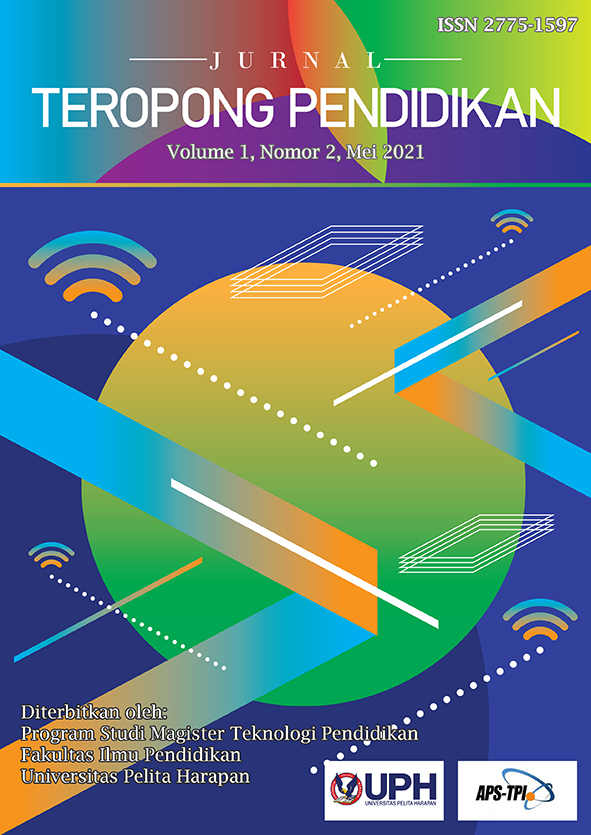PELATIHAN PERHOTELAN UNTUK MENINGKATKAN PELAYANAN, KUALITAS PELAYANAN DAN KETERAMPILAN KOMUNIKASI MELALUI METODE SIMULASI [HOSPITALITY TRAINING TO IMPROVE SERVICE, QUALITY OF SERVICE, AND COMMUNICATION SKILLS THROUGH THE SIMULATION METHOD]
DOI:
https://doi.org/10.19166/jtp.v1i2.3533Keywords:
Classroom Action Research (CAR), hospitality, simulation method, waiters, restaurant, service quality, communication skillsAbstract
This Classroom Action Research (CAR) was conducted to offer solutions for Dapur Solo (DS) Restaurant as the waiters’ service quality and communication skill did not meet expectations: (1) the previous training had been done by the direct supervisor of the waiters; (2) optimal training had never been done, not inline with the training theory and management expectation;(3) no assessment had been used to measure the success of training. This CAR was done in three cycles. The subjects of this research were seven waiters of DS Jakarta. The data collection was conducted with observations, field notes, written assessments, rubrics and documentations with descriptive qualitative analysis. The result of this research showed: (1) there was an improvement in the learning: there were instructional design, post-training implementation in accordance to the lesson plans, and assessments to measure the success of the training; (2) 86% of the training participants had increased on the quality of service; and (3) 100% of the training participants had increased on communication skills.
References
Abdulhak, I., & Suprayogi, U. (2013). Penelitian tindakan dalam pendidikan nonformal. RajaGrafindo Persada.
Adinegara, GN J. A., Yanti, N. K. P., & Astuti, N. M. E. O. (2015). Analisis tingkat kepuasan tamu terhadap pelayanan pramusaji di Sunset Restaurant pada Hotel Puri Raja di Legian, Kuta-Bali. Jurnal Universitas Dhyana Pura, 10(2), 12-21, http://jurnal.undhirabali.ac.id/index.php/virgin/article/download/58/57
Adler, M. J., & Doren, C. V. (2015). How to read a book. Nuansa Cendekia.
Biro Komunikasi dan Layanan Informasi Sekretariat Jenderal. (2013). Komunikasi yang efektif. Kementerian Keuangan RI.
Burke, K. (2006). From standards to rubrics in 6 steps. Corwin Press.
Choiriyah, S., Samidi, & Rukayah. (2014). Upaya meningkatkan kemampuan berkomunikasi lisan melalui bermain peran pada anak kelompok B TKIT Nur Hidayah Surakarta tahun ajaran 2013/2014. Jurnal FKIP, 2(1). https://jurnal.fkip.uns.ac.id/index.php/paud/%20article/view/4293
Chon, K., & Maier, T. A. (2010). Welcome to hospitality: An introduction. Delmar Cengage Learning.
Christinati, M. (2013). Membaca dan menulis permulaan untuk anak usia dini. Jurnal Pendidikan Anak, 2(2), 312-317. https://doi.org/10.21831/jpa.v2i2.3042
Dick, W., Carey, L., & Carey, J. O. (2009). The systematic design of instruction. Pearson.
Effendy, O. U. (2003). Ilmu, teori dan filsafat komunikasi. Citra Aditya Bakti.
Engleberg, I. N., & Wynn, D. R. (2008). The challenge of communicating: guiding principles and practices. Pearson.
Fathurrohman, M. (2015). Model-model pembelajaran inovatif: Alternatif desain pembelajaran yang menyenangkan. Yogyakarta Ar-Ruzz Media.
Heizer, J., & Render, B. (2011). Operations management. Pearson.
Iskandar. (2013). Metodologi penelitian pendidikan dan sosial. Referensi.
Kahl., K. W., & Dahmer, S. J. (2002). Restaurant service basics. John Willey and Sons.
Kandampully, J. (2002). Service management: The new paradigm in hospitality. Pearson Education Australia.
Keputusan Menteri Tenaga Kerja dan Transmigrasi Republik Indonesia Nomor: Kep. 318/MEN/IX/2007 tentang Penetapan Standar Kompetensi Kerja Nasional Indonesia Sektor Penyedia Makanan dan Minuman Sub Sektor Restoran, Bar dan Jasa Boga Bidang Industri Jasa Boga.
Kitapci, O., Dortyol, I. T., Yaman, Z., & Gulmez, M. (2013). The paths from service quality dimensions to customer loyalty: An application on supermarket customers. Management Research Review, 36(3), 239-256. https://doi.org/10.1108/01409171311306391
Kroehnert, G. (2008). Basic training for trainers. McGraw-Hill.
Kusumah, W., & Dwitagama, D. (2012). Mengenal penelitian tindakan kelas. Indeks.
Levi, A., & Stevens, D. D. (2005). Introduction to rubrics: An assessment tool to save grading time, convey effective feedback, and promote student learning. Stylus Publishing.
Meirina, I. (2014). Peningkatan kompetensi profesional pramusaji restoran di Sumatera Barat. Prosiding Konvensi Nasional APTEKINDO VII dan Temu Karya XVIII FPTK/-JPTK Se-Indonesia, 3, 374-579. http://jurnal.upi.edu/proceedingfptk/view/3060/peningkatan-kompetensi-profesional-pramusaji-restoran-di-sumatera-barat.html
Mulyanam, D. (2008). Ilmu komunikasi: Suatu pengantar. Remaja Rosdakarya.
Nurhadi. (2016). Teknik membaca. Bumi Aksara.
Powers, T., & Barrows, C. W. (2003). Introduction to the hospitality industry. John Wiley and Sons.
Sabir, R. I., Irfan, M., Akhtar, N., Pervez, M. A., & Rehman, A. U. (2014). Customer satisfaction in the restaurant; Examining the model in local industry perspective. Journal of Asian Strategy, 4(1), 18-31. http://www.aessweb.com/pdf-files/2-104-4(1)2014-JABS-18-31.pdf
Sardiman. (2012). Interaksi & motivasi belajar mengajar. RajaGrafindo Persada.
Sasongko, F., & Subagio, H. (2013). Pengaruh kualitas layanan terhadap kepuasan pelanggan restoran ayam penyet. Jurnal Manajemen Pemasaran Petra, 1(2), 1-7. http://publication.petra.ac.id/index.php/manajemen-pemasaran/article/viewFile/519/453
Suparman, A. (1997). Model-model pembelajaran interaktif. STIA-LAN.
Trenholm, S. (2008). Thinking through communication: An introduction to the study of human communication. Pearson Education.
Tipathy, G., & Dave, K. (2014). Exploration of service quality factors in restaurant industry: a study of selected restaurants in New Delhi region. Journal of Service Research, 14(1). 8-26.
Wade, D. (2006). Successful restaurant management: From vision to execution. Thomson Delmar Learning.
Wardani, I. G. A. K. (2008). Penelitian tindakan kelas. Universitas Terbuka.
Downloads
Published
Issue
Section
License
Authors who publish with this journal agree to the following terms:
1) Authors retain copyright and grant the journal right of first publication with the work simultaneously licensed under a Creative Commons Attribution License (CC-BY-SA 4.0) that allows others to share the work with an acknowledgement of the work's authorship and initial publication in this journal.
2) Authors are able to enter into separate, additional contractual arrangements for the non-exclusive distribution of the journal's published version of the work (e.g., post it to an institutional repository or publish it in a book), with an acknowledgement of its initial publication in this journal.
3) Authors are permitted and encouraged to post their work online (e.g., in institutional repositories or on their website). The final published PDF should be used and bibliographic details that credit the publication in this journal should be included.





